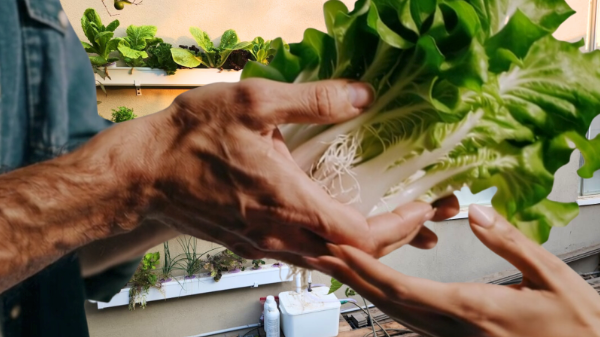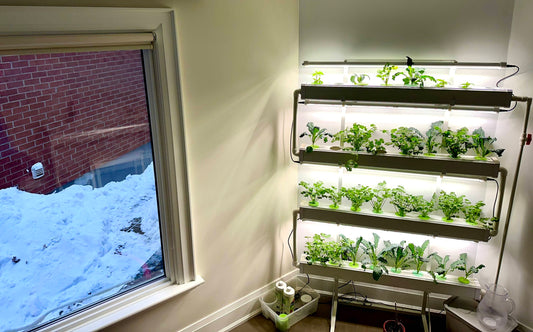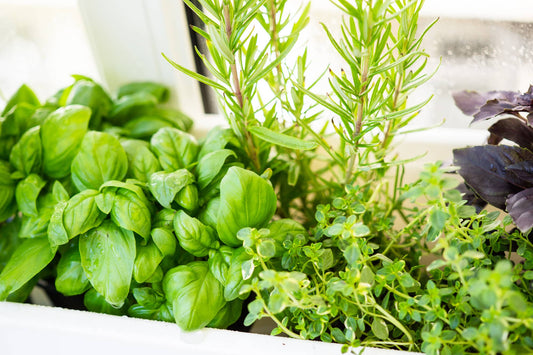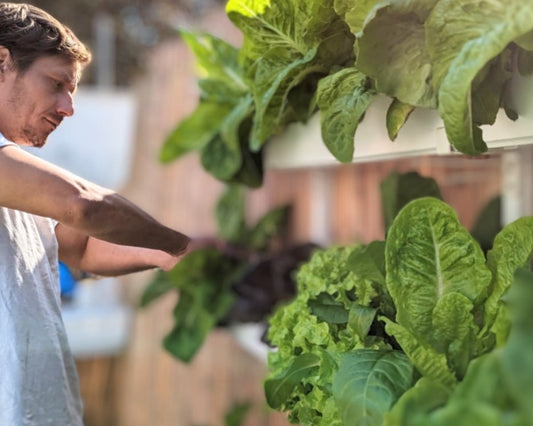Introduction
Hydroponics is a method of growing plants without soil by providing nutrients directly through water. This innovative technique is widely used in agriculture and is becoming increasingly popular among home growers. The term “hydroponics” originates from two Greek words: hydro (water) and ponos (work), meaning “working water.”
In traditional soil-based farming, plants extract nutrients from the soil, but in hydroponics, the need for soil is entirely eliminated. Instead, plants receive all essential nutrients through a carefully balanced nutrient solution. This method enhances efficiency by ensuring plants always have immediate access to what they need for growth, reducing the energy spent searching for nutrients in the soil.
Why is Soil Not Necessary for Plants?
Many people assume that plants require soil to grow, but soil is not an essential factor for plant survival. Instead, soil mainly acts as a sponge, holding water and nutrients that plants absorb through their roots. In hydroponics, the soil’s role is replaced by a nutrient-rich water solution, allowing plants to grow just as effectively, if not more so.
How Hydroponics Works
Providing Nutrients in a Controlled Environment
In a hydroponic system, we supply plants with the macro and micro nutrients they need directly through the water. Typically, these nutrients come from synthetic fertilizers, formulated to provide a perfect balance of essential elements. If additional nutrients are needed, they can be added in the same way, ensuring plants always receive what they require.
Key Conditions for Hydroponic Growth
For a hydroponic system to be successful, the following conditions must be maintained:
- Nutrient Levels – The amount of nutrients in the water depends on the plant type and its specific needs.
- pH Balance – The optimal pH range for hydroponic plants is between 5.5 and 6.5. Maintaining this range ensures proper nutrient absorption.
- Oxygen Availability – In hydroponics, oxygen is provided directly to the roots, ensuring proper respiration. Each hydroponic method includes a way to oxygenate the root system.
- Temperature Control – The ideal temperature varies by plant type, but every plant has a minimum and maximum threshold beyond which growth is negatively affected.
Light, Humidity, and Airflow: The Same as Soil-Based Growing
Despite eliminating soil, hydroponics does not change other fundamental growing requirements:
- Light: Plants still need sunlight or artificial grow lights to perform photosynthesis. At least three hours of direct light or an equivalent artificial light source is required.
- Humidity and Airflow: Proper air circulation and humidity levels are just as crucial in hydroponics as in soil-based farming.
- Outdoor Temperature: Just like traditional farming, hydroponic plants thrive within specific temperature ranges.
The Benefits of Hydroponics
Hydroponics is an extremely efficient growing method that offers several advantages over traditional farming.
1. Water Conservation
One of the most significant benefits of hydroponics is its ability to save water. In traditional farming, large amounts of water are lost through runoff, soil absorption, and evaporation. However, hydroponic systems recirculate water, using up to 90% less water than soil-based agriculture.
📖 Source: A study by the University of Arizona found that hydroponic farming reduces water usage by up to 90% compared to conventional soil-based farming.
2. Faster Growth and Higher Yields
Because nutrients are readily available, plants in hydroponic systems grow 30–50% faster than in soil. The controlled environment allows for year-round production, leading to higher yields per square foot.
📖 Source: According to research published by NASA, hydroponic plants grow up to 50% faster due to optimized nutrient delivery.
3. Space Efficiency and Vertical Growing
Hydroponic systems allow growers to cultivate plants vertically, making them ideal for urban environments, homes, and places with limited ground space. This means that crops can be grown on rooftops, balconies, indoors, and in small apartments—anywhere with adequate light and electricity.
4. Fertilizer Efficiency and Reduced Waste
In soil farming, fertilizers leach into the ground, where they are often wasted or absorbed by other plants. In hydroponics, nutrients are delivered directly to the plants, with most systems using a recirculating nutrient solution, reducing fertilizer waste by 60-70%.
📖 Source: Research from the University of California shows that hydroponic nutrient efficiency is 60-70% higher than in soil-based farming.
5. Reduced Need for Pesticides
Because hydroponic systems are often grown indoors or in controlled environments, they experience fewer pest issues compared to soil farming. This means:
- Less need for chemical pesticides
- Healthier produce with fewer contaminants
- A more sustainable and environmentally friendly growing method
📖 Source: A study by Cornell University found that hydroponic systems require 80% fewer pesticides than traditional farming.
6. Healthier and More Sustainable Food Production
Hydroponic growing enables people to take control of their own food production, leading to:
- Healthier eating habits
- Reduced reliance on store-bought produce
- More sustainable food sources for families and communities
What Can Be Grown in a Home Hydroponic System?
Hydroponic systems can be used to grow a wide variety of crops, including:
- Herbs: Basil, mint, cilantro, oregano, thyme
- Leafy Greens: Lettuce, spinach, kale, arugula
- Fruiting Vegetables: Tomatoes, peppers, cucumbers, strawberries
- Flowers: Various ornamental and edible flowers
At Nature Tech, we emphasize education and sustainability, teaching home growers how to cultivate their own food in the most efficient, healthy, and eco-friendly way possible. By taking charge of our food production, we can:
- Save money
- Improve personal and family health
- Educate children on sustainability and food independence
Conclusion
Hydroponics is a revolutionary growing method that eliminates the need for soil while providing faster growth, higher yields, and greater efficiency. It allows people to grow food anywhere, from rooftops to balconies, with minimal water use and fewer pesticides.
By understanding hydroponics, we empower ourselves to grow our own food, become more sustainable, and create a healthier future for ourselves and future generations.




